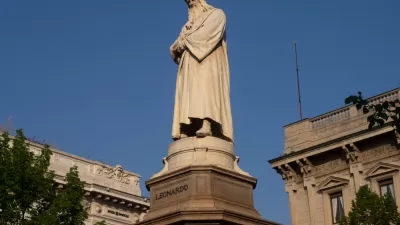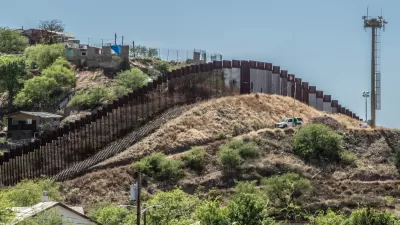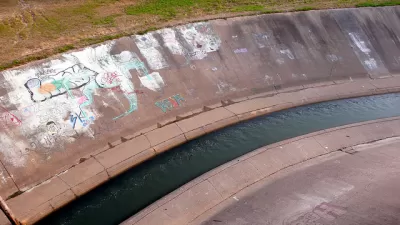Details about what the federal infrastructure plan would spend money, or where it would get the money to spend, have yet to be revealed.

"Democratic congressional leaders emerged from a meeting at the White House on Tuesday and announced that President Trump had agreed to pursue a $2 trillion infrastructure plan to upgrade the nation’s highways, railroads, bridges and broadband," reports Annie Karni and Alan Rappeport.
The next date to watch as this infrastructure plan develops is three weeks from now, when the trip will meet again, and President Trump is "expected to tell them how he planned to actually pay for the ambitious project."
As noted in the article, the president named big promises about infrastructure spending during the presidential campaign of 2016, but the phrase "Infrastructure Week" has turned into a punch line as the administration has failed to make any progress on the issue in its first two years in office. A plan proposed at the beginning of 2018 died quickly in Congress.
The article places the infrastructure meeting in context of the very complicated politics surrounding the president, and also discusses the consequences of Democrats trying again on infrastructure in the wake of the Mueller Report and ongoing work by the Trump administration to roll back environmental regulations.
FULL STORY: rump and Democrats Agree to Pursue $2 Trillion Infrastructure Plan

Trump Administration Could Effectively End Housing Voucher Program
Federal officials are eyeing major cuts to the Section 8 program that helps millions of low-income households pay rent.

Planetizen Federal Action Tracker
A weekly monitor of how Trump’s orders and actions are impacting planners and planning in America.

Ken Jennings Launches Transit Web Series
The Jeopardy champ wants you to ride public transit.

Washington Legislature Passes Rent Increase Cap
A bill that caps rent increases at 7 percent plus inflation is headed to the governor’s desk.

From Planning to Action: How LA County Is Rethinking Climate Resilience
Chief Sustainability Officer Rita Kampalath outlines the County’s shift from planning to implementation in its climate resilience efforts, emphasizing cross-departmental coordination, updated recovery strategies, and the need for flexible funding.

New Mexico Aging Department Commits to Helping Seniors Age ‘In Place’ and ‘Autonomously’ in New Draft Plan
As New Mexico’s population of seniors continues to grow, the state’s aging department is proposing expanded initiatives to help seniors maintain their autonomy while also supporting family caregivers.
Urban Design for Planners 1: Software Tools
This six-course series explores essential urban design concepts using open source software and equips planners with the tools they need to participate fully in the urban design process.
Planning for Universal Design
Learn the tools for implementing Universal Design in planning regulations.
Heyer Gruel & Associates PA
Ada County Highway District
Institute for Housing and Urban Development Studies (IHS)
City of Grandview
Harvard GSD Executive Education
Toledo-Lucas County Plan Commissions
Salt Lake City
NYU Wagner Graduate School of Public Service





























